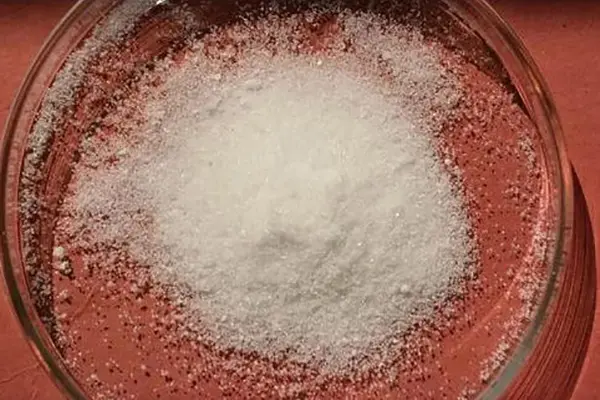DIY Chemistry: Whipping Up a Batch of Ammonium Dihydrogen Phosphate (But Maybe Don’t?)
Ever dreamt of channeling your inner mad scientist in the comfort of your own kitchen? Maybe concocting a secret potion to boost your houseplants or, who knows, invent the next big fertilizer craze? Well, hold on to your beakers, fellow experimenters, because today we’re diving into the exciting (and slightly cautionary) world of making ammonium dihydrogen phosphate (ADP) at home. But before you grab your mortar and pestle, let’s unravel the science, explore the safety concerns, and ultimately, consider whether DIY ADP is truly the greener (or safer) path for your gardening adventures.

Unveiling the Mystery Molecule: What is ADP?
Ammonium dihydrogen phosphate, often dubbed “MAP” in the fertilizer world, is a salt. But don’t picture the flaky kind you sprinkle on your fries; this one’s formed from ammonia and phosphoric acid, creating a potent duo of nitrogen and phosphorus – essential nutrients for healthy, thriving plants. Think of it as a secret handshake between two chemical rockstars, ready to supercharge your garden’s growth.
The DIY Brew: Crafting Your Own Batch (With a Big, Bold But)
Now, the question you’ve been itching to ask: how do you whip up a batch of ADP at home? Well, technically, it’s possible. By carefully reacting ammonia solution with phosphoric acid under controlled conditions, you can coax these two chemicals into forming our friend ADP. But here’s the big, bold BUT:
Hold the Bunsen Burner: Why Safety Should Be Your Top Ingredient
Making ADP at home, unless you’re a seasoned chemist with a fully equipped lab, is fraught with risks. Consider these alarming ingredients:
- Dangerous Vapors: Both ammonia and phosphoric acid are volatile, releasing pungent and potentially harmful fumes. Imagine opening a bottle of eye-watering onions, only ten times worse, and that’s just the smell!
- Skin and Eye Irritants: Contact with these chemicals can lead to burns, redness, and even permanent damage. Think of them as tiny, angry gnomes throwing chemical tantrums on your skin.
- Explosion Hazard: Improper mixing or storage can result in explosive reactions. Picture your science experiment going from “Eureka!” to “Oh no!” in the blink of an eye.
A Safer Path: Alternative Options for Plant Power
So, while the allure of DIY science is tempting, don’t risk your safety or your home decor for a homemade fertilizer batch. Luckily, there are plenty of safer, readily available options to nourish your plants:
- Commercial Fertilizers: Choose reputable brands with clear safety instructions and follow directions carefully. Think of them as pre-made potions, formulated by experts without the hazardous fumes.
- Compost: This kitchen and yard waste goldmine offers a natural, nutrient-rich boost for your plants. Imagine turning scraps into superpowers for your soil.
- Manure: Another natural option, manure provides a balanced blend of nutrients and organic matter. Just be sure to source it from reputable sources and let it age properly before use. Think of it as nature’s own fertilizer factory.
Conclusion: Knowledge is Your Fertilizer, Safety Your Seed
While the idea of DIY ADP might sound exciting, prioritize safety and explore readily available, safer alternatives. Remember, knowledge is the key to healthy gardening, not risky home chemistry experiments. Nourish your plants with wisdom, choose responsible fertilizer options, and watch your green oasis flourish under your care. Happy (and safe) gardening!
FAQ:
Q: Are there any safe home methods for creating plant fertilizers?
There are some less risky DIY options for plant fertilizers, but even these require research and caution. Examples include diluted seaweed extract, compost tea, or fermented fruit and vegetable scraps. However, it’s always crucial to research the specific methods and potential risks before attempting any home brews. Remember, safety first, even when talking about plant food!
So, fellow green thumbs, let’s embrace the wonder of plant science with a responsible, knowledge-based approach. May your gardens burst with vibrant life, fueled by safe and effective nourishment, and not by a questionable science experiment gone wrong! Happy planting!
Post time: Jan-22-2024










